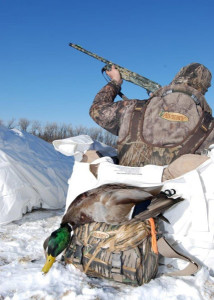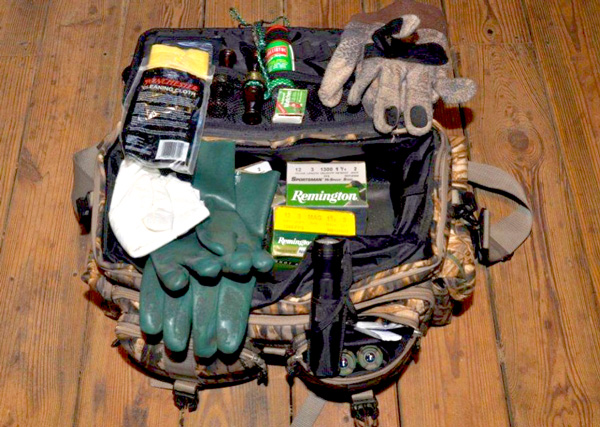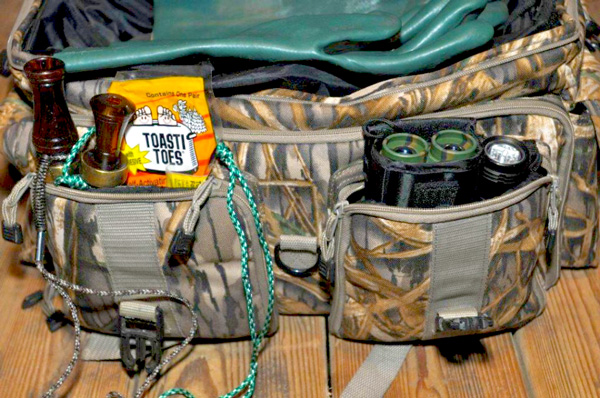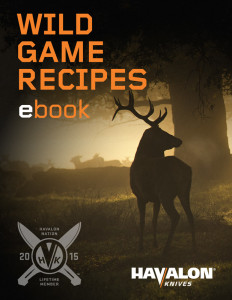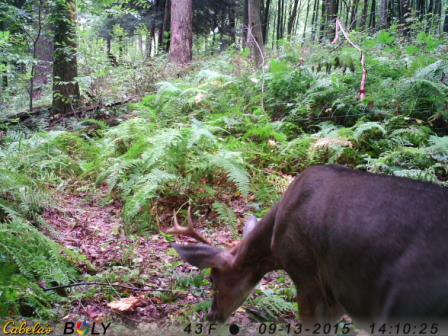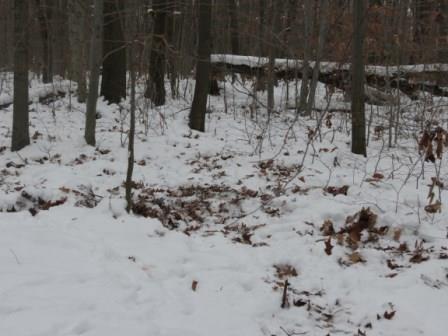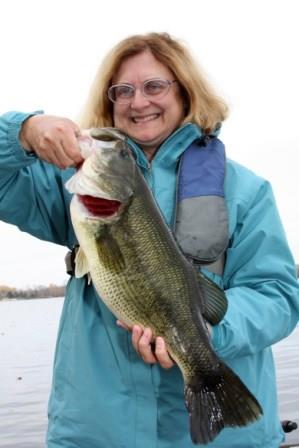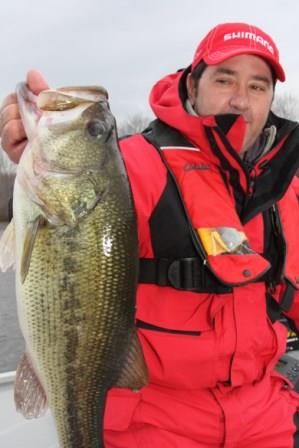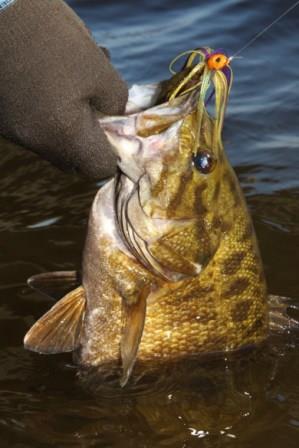Are you Christmas shopping for a lady hunter?
Here are five things every man should know!
By Vikki Trout
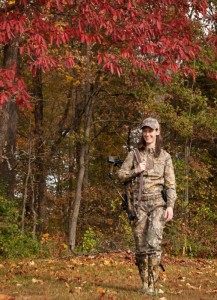
When hunters leave the woods without firing a single shot, they take fond memories with them – even if they don’t have immediate success.
(Photo: Vikki Trout)
Many years ago, my precious husband John invited me hunting. My excitement and anticipation was indescribable, but what was I to wear? I knew blue jeans and a sweat shirt wouldn’t work. And he was clueless to the needs of a woman hunter.
Of course, comfort and warmth were foremost on my mind. Professor Michael Tipton at the University of Portsmouth, Hampshire, UK claims studies have proven women suffer more from cold than men do. “The body’s thermo-receptors detect cold, causing the capillaries to shrink. This process is called vasoconstriction,” states Professor Tipton. When men and women are placed in cold air to lower body temperatures, women will suffer vasoconstriction faster than men will.
That means when your lady says she’s cold, pay attention. There’s a physiological reason. Fortunately, companies have finally addressed the needs of the gentler sex, giving women the warmth and fit we need.
- Camouflage Clothing
Surely you’ve noticed women and men are built differently, so don’t expect men’s clothing to fit women well. Bass Pro Shop (www.basspro.com) offers shirts and pants in Realtree Xtra pattern by SHE Outdoors. Here are some tips to help you decide on size.
Cargo Pants and Shirt — My typical blue jean size is 2. Correspondingly, my camouflage size is Small for shirts and cargo pants. If your female counterpart wears size 3 to a size 7, I suggest Medium camo. If she wears anything over size 7, purchase Large cargo pants and shirt.
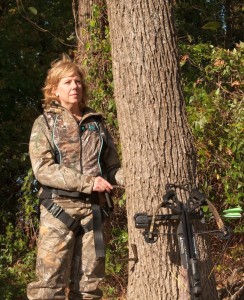
Hunter Safety System offers the women’s Contour safety harness. No hunter should be without a safety vest and Lifeline. Here, the author’s daughter-in-law Annette Trout prepares to climb a tree for a crossbow hunt. (Photo: Vikki Trout)
A catalog that sells women’s hunting clothing should have a size chart you can also depend on, but you want to allow room for her to wear long underwear and possibly a turtle neck or sweatshirt underneath her shirt and cargo pants. Cabela’s (www.cabelas.com) offers women’s long underwear tops and bottoms in “polar weight” that provide great warmth and little bulk. Match the size to her camouflage shirt and pants.
Bibs and Coat — Bass Pro (www.basspro.com) offers an insulated jacket with hood and bibs in Realtree Xtra that provide warmth and protection from the wind. My coat size is Small, but my bibs and hunting coat are size Medium to allow room for layered clothing underneath.
Belt and Hat — Cabela’s (www.cabelas.com) offers a “youth” size Realtree Xtra camo belt that is available in waist sizes ranging from size 22 to size 32. Get a belt at least 2 inches larger than her waist, allowing room for her to fasten it comfortably. They also carry a baseball style cap in Realtree Xtra, adjustable for proper fit.
- Footwear
Purchase her a pair of women’s rubber boots. They provide warmth and comfort, plus rubber helps contain human scent. Cabela’s carries Irish Setter rubber boots sized for ladies. The Woman’s Rutmaster 2.0 with 1,200-gram PrimaLoft Gold Eco insulation will keep her feet toasty. It’s a great boot for all types of hunting. I wear a light pair of socks under my hunting socks. As for size, my sneakers are size 8 and so are my Rutmaster boots.
- Safety Harness
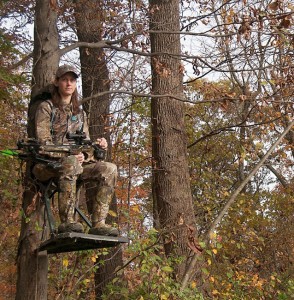
Nancy Owens sits comfortably in her tree stand watching patiently for a deer to come skirting the fringe. (Photo: Vikki Trout)
Hunter Safety System (www.huntersafetysystem.com) designed a most-perfect harness for women. The HSS-Contour has three stretch panels and a zippered front for a snug fit, and give safety, comfort and maximum range of movement.
If the camouflage you purchase is size Small, order her vest in size S/M, however, if you order size Medium camo, order size M/L vest. The HSS vest is easily adjustable, guaranteeing a great fit.
According to Jerry Wydner with Hunter Safety System, the latest surveys show 86% of treestand falls occur when the hunter is NOT in the treestand. This is why hunters need to stay attached to the tree from the moment they leave the ground until they return to the ground. The LIFELINE rope accessory allows her to connect the tether to the carabiner. At no time will she be disconnected from the tree or need to tether herself after climbing. I strongly urge you to order the LIFELINE when ordering her vest.
- Bow or Gun
I began hunting with a compound bow, but now rely solely on my TenPoint crossbow. If crossbows are legal weapons in the state you hunt, I urge you to purchase the crossbow. Most are easier to shoot and will provide almost immediate accuracy. TenPoint’s website (www.tenpointcrossbows.com) lists states where crossbow hunting is legal and even shows retailers in your area that carry them.
If you are purchasing her a gun, consider a lightweight 12 or 20 gauge shotgun — not a youth gun unless she’s very small. A trip to the local sporting goods store will be your best bet, but be sure they can adjust the gun for your lady’s frame or advise you as to someone that can. For example, the stock had to be shortened on the Remington 870 I use in order for me to reach the trigger.
- Necessary Accessories
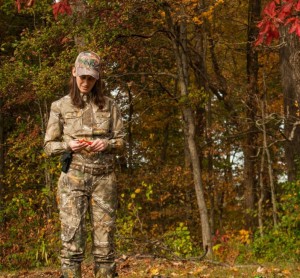
Nancy Owens admires her Havalon Piranta Edge. When the day arrives to use it, she knows her knife will be ready and able. (Photo: Vikki Trout)
Every hunter has personal preferences for equipment, but all need a knife and fanny pack or back pack. The knife for your special lady should fit her properly to help avoid injury. I have had several knives through the years, but my favorite knife is the Havalon Piranta (www.havalon.com). I can hold it comfortably and the blade folds easily when not in use. I can operate it safely because it’s extreme sharpness lets me slice without a lot of strength or pressure on the blade. It’s lightweight and comes with a nylon belt holster. The blade remains sharp much longer than other knives and Havalon provides additional blades with each knife you buy. I love the orange handle, easily visible even in brush.
Fanny packs are more convenient and less expensive than backpack, but they do not hold as much. Be aware of the tradeoff. A loaded fanny pack weighs much less than a loaded backpack, but backpacks with a good waist belt distribute weight more evenly. Cabela’s carries the Herter’s 7-pocket fanny pack in Realtree Xtra that adjusts easily. If you need to carry more gear, Cabela’s also offers a variety of back packs.
My beloved husband John always enjoyed hunting with me, but now resides in Heaven. I am so grateful to have many awesome memories forever etched in my mind and on my heart. We hunted together for 25 years, and I miss him dearly, but until we can be together again to tell our hunting stories, he is keeping a spot for me beside him at the campfire above.
***
 Vikki Trout is a full-time freelance writer and photographer from southern Indiana. She hunts turkey, deer, bear, and small game. When she’s not hunting, she loves capturing wildlife thru the lens of her camera. Visit her website at www.troutswildoutdoors.com.
Vikki Trout is a full-time freelance writer and photographer from southern Indiana. She hunts turkey, deer, bear, and small game. When she’s not hunting, she loves capturing wildlife thru the lens of her camera. Visit her website at www.troutswildoutdoors.com.
Need a Havalon of your own? 
3,599 total views, no views today


